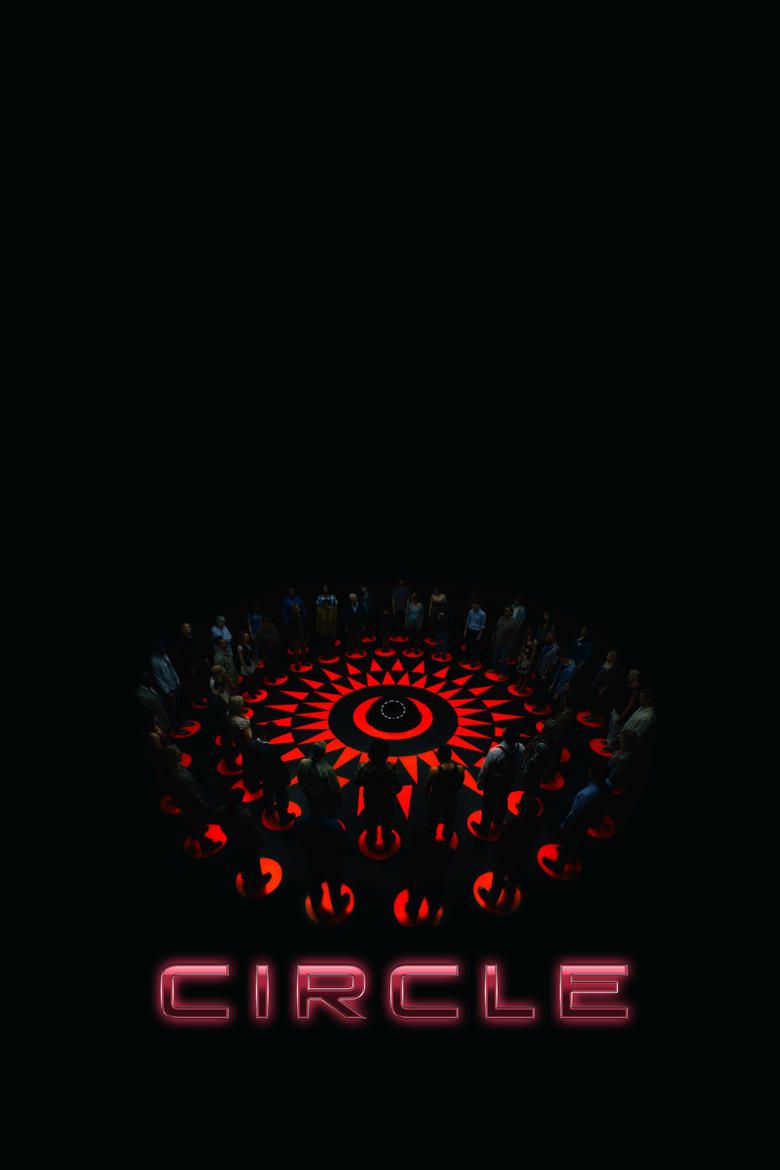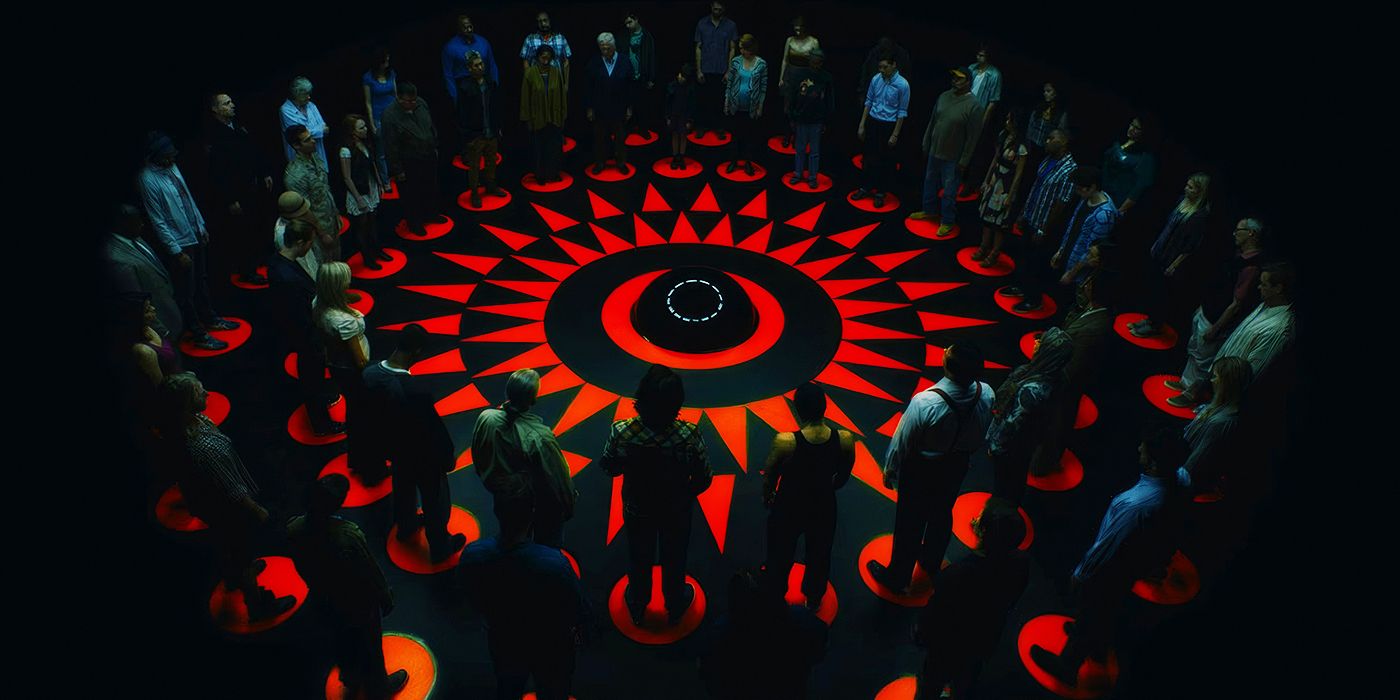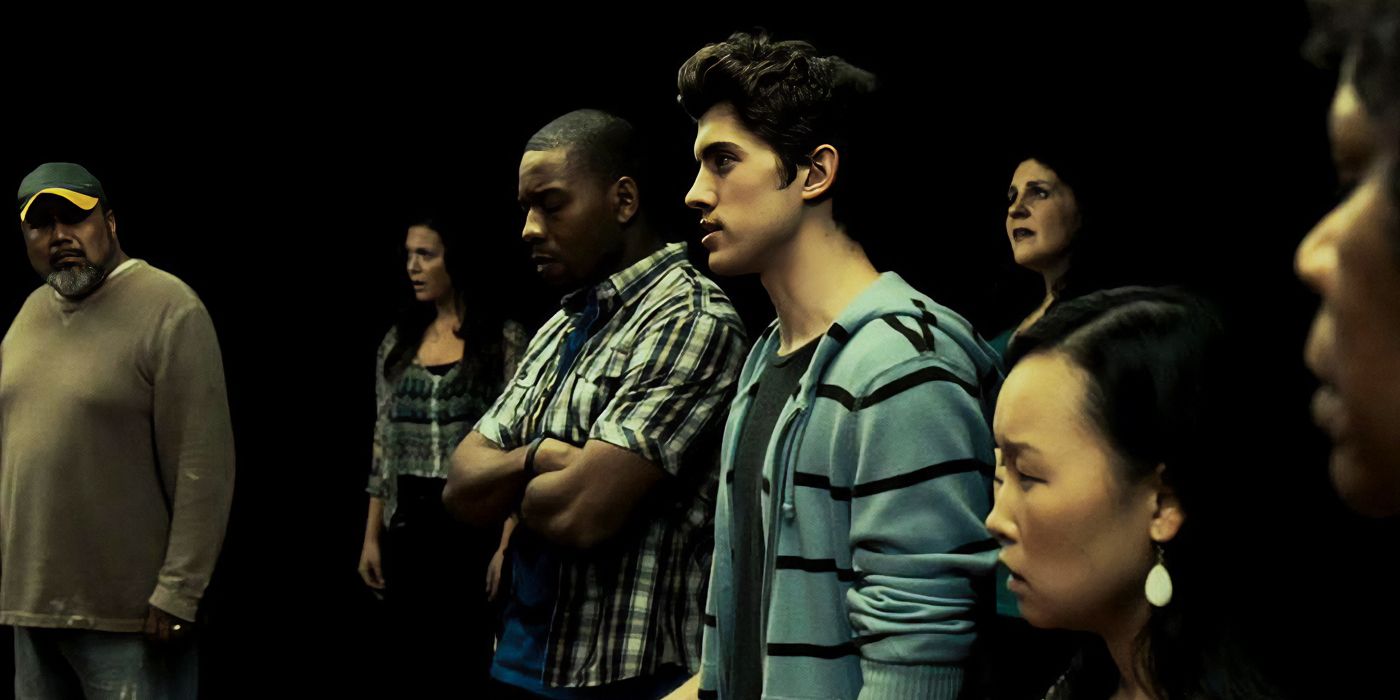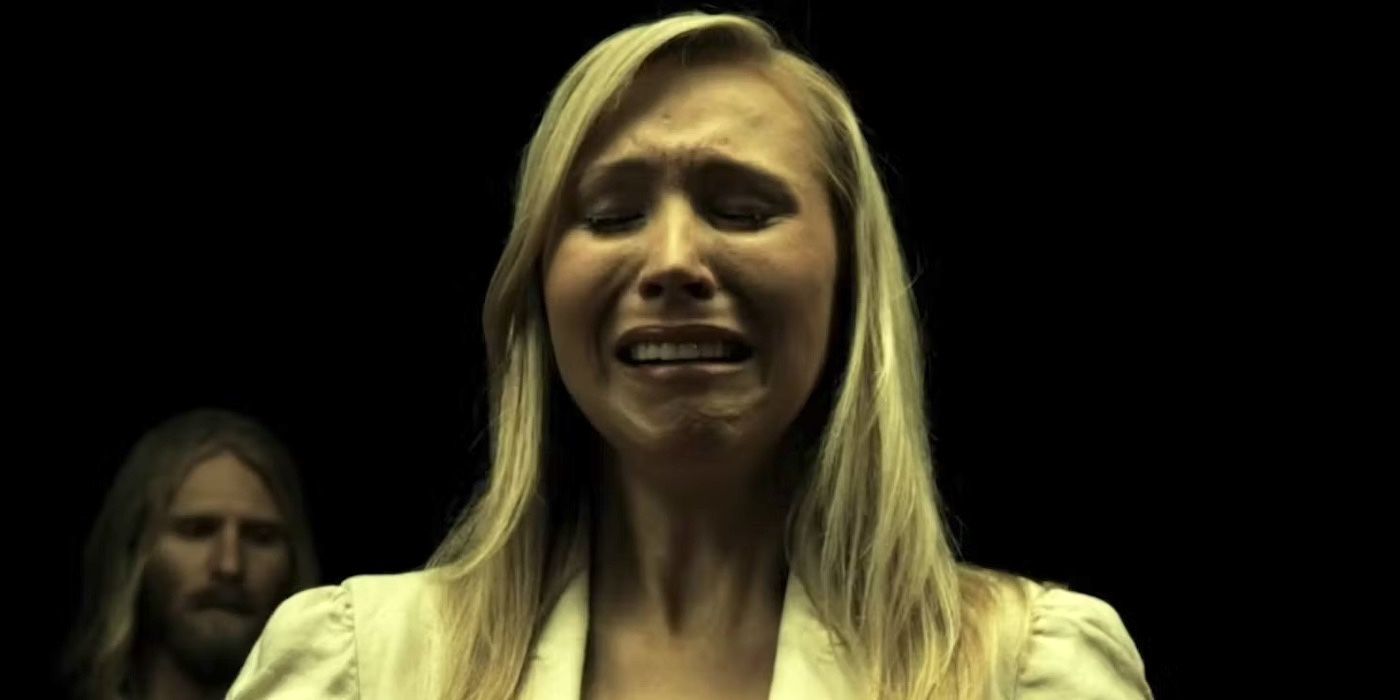The death game subgenre is as popular as ever, with the release of a new installment in The Hunger Games universe—Sunrise on the Reaping—as well as the return of Squid Game imminent. However, often these stories rely on huge arenas and spectacle, and the focus is on either the emotion or the graphic nature of each death. 2015’s undersung Circle, however, strips all that back and takes the Battle Royale subgenre in a completely different direction.
There is no gore and no complicated mechanisms; instead, the movie simply asks who should survive in a group of 50 diverse individuals. In this way, it takes narrative inspiration from 12 Angry Men, relying solely on conversation to push the narrative forward. This stripped-back filmmaking creates an extremely intimate and personal viewing experience, encouraging the viewer to piece together their own views on morality. Through this, Circle creates a psychological and ominous study of humanity, meticulously unpacking the subgenre in which it is situated. At times, it is uncomfortable to watch and asks deliberately sensitive questions, but this is all serving its sole purpose of causing the viewer to confront their own ethical standpoint.
‘Circle’ Turns Death Games Into an Episode of ‘Survivor’
Circle sees 50 apparent strangers wake up in a dark room, each standing in their own illuminated marking on the floor. Piece by piece, they decipher that stepping out of their designated spot results in death, and every two minutes someone is shot with a laser and killed. Eventually, they figure out that twisting their hands syncs up with triangles placed in front of each individual, and they have the ability to vote for who should be eliminated each round. This begins a discussion of each person’s moral worth and causes participants to state their case for survival.
The initial suggestion is to eliminate players based on age, with the assumption that they have had the ability to live their lives. However, this creates tension over the cutoff point and whether the group just continuously votes off players in decreasing age brackets. It soon becomes clear that only one of them will make it out alive, and with the inclusion of a pregnant woman as well as a child, the consensus is that it should be one of them. This is where the movie begins to explore different ethical viewpoints and utilize its minimal method of filmmaking.
2:11

Related
The 60 Best Psychological Thrillers of All Time, Ranked
Movies that are guaranteed to get in your head.
The constant conversation is disorienting as the camera swings round the various individuals who put forward their perspective. Through this, blocks begin to form and alliances are discussed. Much like an episode of Survivor, each group is attempting to decipher whether they have the numbers to eliminate their chosen player. The general division is between those who want to let either the pregnant woman or the child survive and those who are stating a claim and fighting for their very own lives.
‘Circle’ Uses Ambiguity to Make the Viewer Uncomfortable
The genius of Circle’s concept is that it doesn’t dwell on names, and each participant becomes their profession, family and traits. This causes the viewer to integrate the true value of human life whilst constantly throwing counterarguments into the frame. Throughout, there are conversations about sex work, income, and dependents, but the movie never chooses a side; that is left to the viewer.
Utilizing the framework of 12 Angry Men, Circle makes the choice to never show any footage of its cast outside of the game room. Therefore, the audience gets no prior knowledge or information about any participants, and it manages to create a truly unbiased starting point for the viewer. As each cast member begins stating their position, you find yourself attempting to decipher who is telling the truth and selecting who you trust. Although these social alliances are slowly formed, there is no true antagonist, meaning the viewer has total freedom to make their own inferences.
‘Circle’ Is a Deep Examination of Horror Death Tropes
As a genre, horror is packed with death tropes that are reliant on social characteristics and activity, such as sex equaling death or a person of color dying first. Although some of these tropes are outdated and often subverted in modern day horror, they are still intrinsically linked to the genre. Circle is a 90-minute examination of these tropes and their correlation to the value of someone’s life. The movie is politically and socially charged but never definite in its decisions; even the final survivor isn’t the movie indicating that they were the most worthy of living.
Circle is a completely unique survival horror that forces the viewer to confront uncomfortable moral dilemmas. It reinvents the bleak apocalyptic setting by not overcomplicating itself with lore and explanation; instead, it uses ambiguity to encourage internal conversation even after the credits roll.

- Release Date
-
October 16, 2015
- Runtime
-
86 minutes
- Director
-
Aaron Hann
-

-

Carter Jenkins
College Guy





